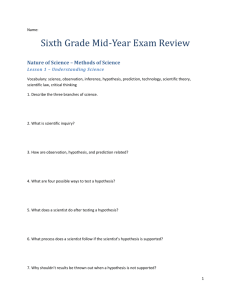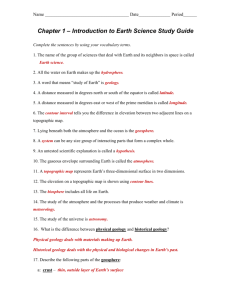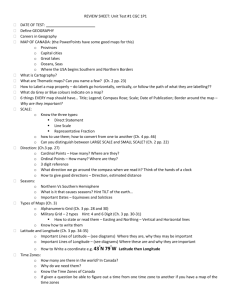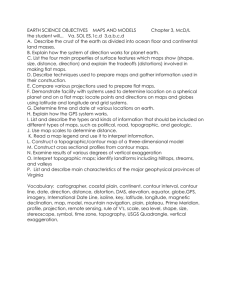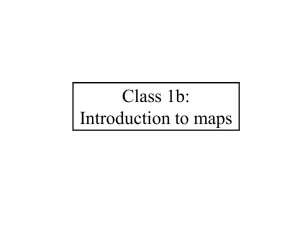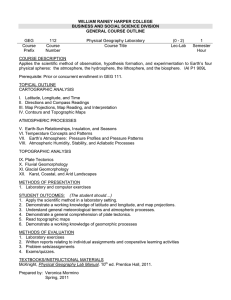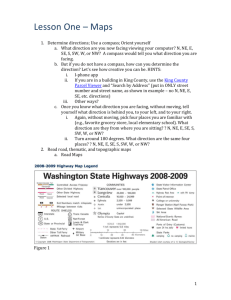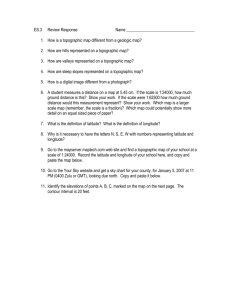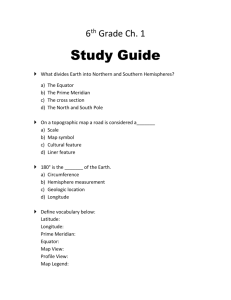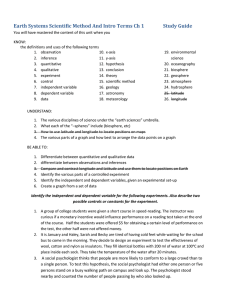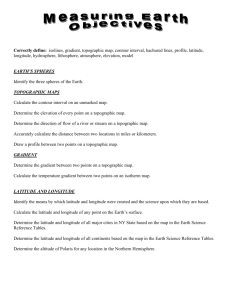Vocabulary for Earth Science Introduction (Chapter 1) 1.1 and 1.4
advertisement
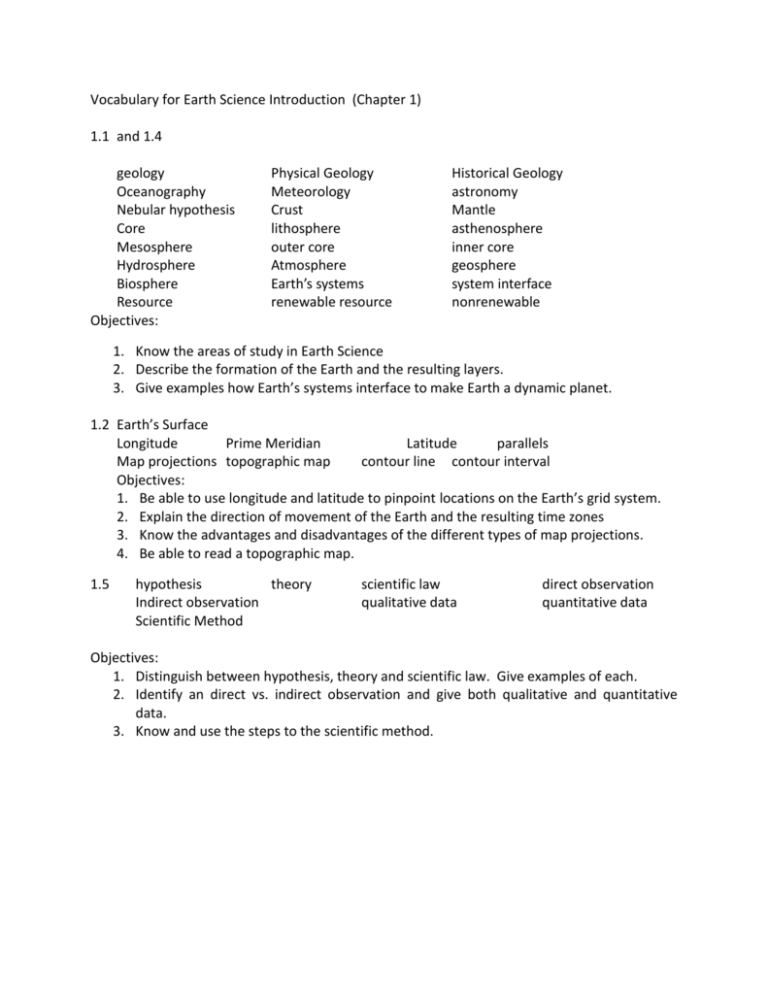
Vocabulary for Earth Science Introduction (Chapter 1) 1.1 and 1.4 geology Oceanography Nebular hypothesis Core Mesosphere Hydrosphere Biosphere Resource Objectives: Physical Geology Meteorology Crust lithosphere outer core Atmosphere Earth’s systems renewable resource Historical Geology astronomy Mantle asthenosphere inner core geosphere system interface nonrenewable 1. Know the areas of study in Earth Science 2. Describe the formation of the Earth and the resulting layers. 3. Give examples how Earth’s systems interface to make Earth a dynamic planet. 1.2 Earth’s Surface Longitude Prime Meridian Latitude parallels Map projections topographic map contour line contour interval Objectives: 1. Be able to use longitude and latitude to pinpoint locations on the Earth’s grid system. 2. Explain the direction of movement of the Earth and the resulting time zones 3. Know the advantages and disadvantages of the different types of map projections. 4. Be able to read a topographic map. 1.5 hypothesis theory Indirect observation Scientific Method scientific law qualitative data direct observation quantitative data Objectives: 1. Distinguish between hypothesis, theory and scientific law. Give examples of each. 2. Identify an direct vs. indirect observation and give both qualitative and quantitative data. 3. Know and use the steps to the scientific method.

